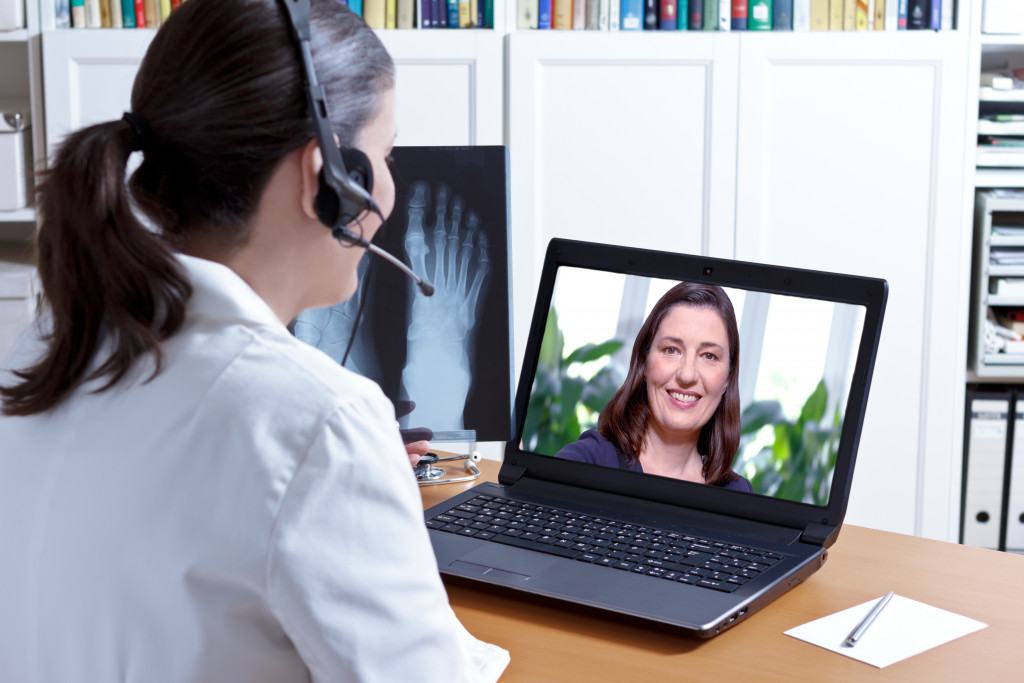Disclaimer: This website provides health information for educational purposes only and is not a substitute for professional medical advice, diagnosis, or treatment. Always seek the guidance of a qualified healthcare provider with any questions you may have.
The progression of technology has had a profound impact on medicine. From diagnostic procedures to treatment methods, modern practices have revolutionized how healthcare teams can care for their patients.
These changes have led to improved health outcomes and even saved lives in many cases. Here are just a few examples of how technology is changing health care:
Diagnostic Tools
One of the most notable advances in medical technology has been the development of diagnostic tools. Imaging technologies like CT scans and MRIs have made it possible to identify health issues in their earliest stages when they are most treatable.
These technologies have also made it possible to more accurately diagnose conditions, which has led to more effective treatment plans. It’s a remarkable example of how technology can save lives.
Although these diagnostic tools are expensive, their use has led to significant cost savings in the long run by reducing the need for additional tests and procedures. So, while the initial cost may be high, the benefits are undeniable.
Treatment Methods
Medical technology has also led to new and improved treatment methods. For example, minimally invasive surgery techniques allow surgeons to operate with smaller incisions, which leads to shorter recovery times and less pain for patients.
In addition, advances in pharmacology have made it possible to develop more targeted and effective medications. These drugs can often treat conditions with fewer side effects than older medications.
There are also a variety of medical devices that you can use to treat conditions. These devices range from pacemakers to artificial joints and have helped countless patients live longer, healthier lives.
Healthcare IT
The field of healthcare IT is another area where technology is making a significant impact. By automating tasks and records management, healthcare IT systems make it easier for healthcare providers to do their jobs and provide better patient care.
In addition, these systems make it possible for patients to access their health records from anywhere, which can be a valuable resource when managing chronic conditions.
That’s why many hospitals and healthcare facilities are encouraged to partner with an IT company. By doing so, they can take advantage of the latest healthcare IT advances and ensure that their patients receive the best possible care.
Telemedicine

One of the most exciting developments in medical technology is the growth of telemedicine. It allows patients to consult with their doctors remotely using video conferencing or other means of communication.
This practice is particularly beneficial for patients in rural areas who may not have easy access to healthcare providers. It’s also helpful for patients with chronic conditions who need to see their doctors regularly but may not make the trip to their office.
It saves patients time and money and allows doctors to treat more patients. That’s why telemedicine is quickly becoming a popular way to provide healthcare.
Virtual Reality
Virtual reality is another area of medical technology that is growing. It’s being used to train surgeons and other healthcare providers. It’s also essential to provide treatments for conditions like PTSD.
You may use virtual reality even more extensively in healthcare in the future. It has the potential to revolutionize the way we provide care, and it’s an exciting prospect for the future of medicine.
Just imagine attending a virtual reality doctor’s appointment or receiving treatment for a mental health condition in a virtual reality environment. The possibilities are endless.
3D Printing
3D printing is another area of medical technology that is rapidly evolving. It’s being used to create prosthetic limbs, implants, and even human tissue.
3D printing may be used to create entire organs for transplant in the future. It would revolutionize the field of organ transplants and make it possible for more people to receive the life-saving treatment they need.
3D printing is also being used to create customized medical devices and implants. It could help reduce the cost of medical care and make it easier for patients to get the treatment they need.
The Future of Medical Technology
The future of medical technology is fascinating. Scientists are constantly developing new diagnostic tools and treatments that could change the face of medicine.
In addition, healthcare systems are becoming more sophisticated and capable of handling more data. This data can help improve patient care and make the healthcare system more efficient.
Exciting advances like these are proof that medical technology is essential to the future of healthcare. So, if you’re interested in a career in medicine, be sure to keep up with the latest advancements. It’s an exciting time to be involved in the field of medicine, and there’s no telling what the future will hold.

